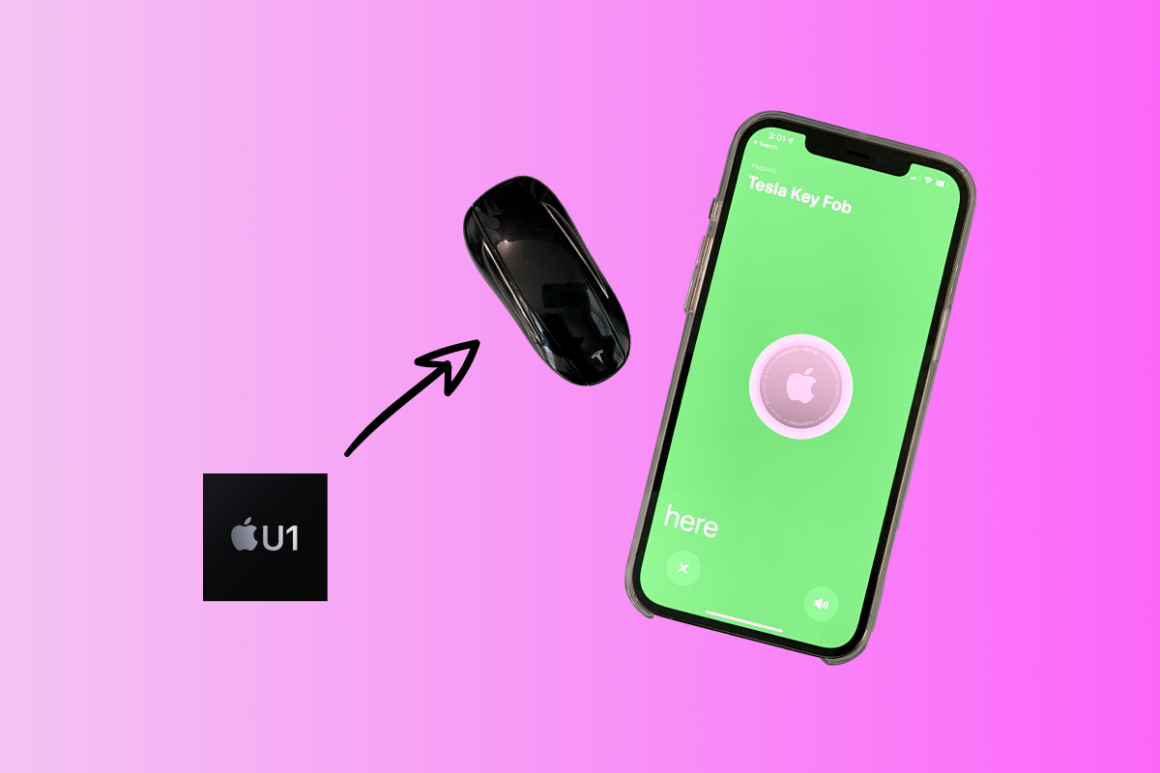Ever since Apple announced that third-party manufacturers can tap into the Find My Network and use Apple’s U1 specs, I thought how cool it would be if Tesla integrated the Apple’s U1 specs into new Key Fobs, allowing them to connect to the Find My Network and be found with Precision Finding.
Since the likelihood of a “Find My” enabled Tesla Key Fob was almost 0 (since Apple collects royalties on every product with MFi), I decided to set out on my own to add Find My support to my Tesla Model X Key Fob.
Here is the process of how I figured out how to integrate an AirTag into my Tesla Model X Key Fob, coming to you as an Appleosophy exclusive! Continue reading below…
Watch the video
Key Fob + AirTag
After purchasing and tearing down an AirTag, I realized that the dimension of the board was just enough to squeeze into the Key Fob enclosure, with some modifications. Apple’s AirTag uses CR2032 batteries (3V) while the Key Fob uses CR2354 batteries (also 3V). Though both devices use different batteries, the only technical difference was the dimensions of the cells. It should be possible to connect both the boards together, to run on the same battery cell (CR2032).
After melting and cutting down some plastic on the Key Fob enclosure, I figured out the optimum way to put the AirTag board inside was to have it in place of the Key Fob battery. I planned to then connect both the boards together electronically, then use the AirTag battery to power both the AirTag board and the Key Fob board.
I tested my theory out, successfully proved that the AirTag (inside the Key Fob) was being detected by my iPhone, and my car was unlocked via the Key Fob. I had replaced the Key Fob battery with an AirTag + an AirTag battery. Of course, this means that instead of every 2-3 years, the battery in the Key Fob would probably have to be changed every few months.
As only the board remained of the AirTag now, there was no way to secure the battery in place to prevent it from disconnecting. The solution was to take a large portion of the battery holder in the original AirTag enclosure, and use plastic bonding glue to fix it to the opening in my Key Fob. The connections between the Key Fob and the AirTag boards took up a little extra space, so I had to melt away some of the plastic in the AirTag battery holder to fit the CR2032 cell.
After putting the rest of the Key Fob back together, it was time to open the Find My app and start finding my Key Fob!
Limitations to the design
There are two drawbacks to the implementation that I’ve done. If anyone else is trying this, please keep these in mind, or try to find a workaround.
The signal strength from the AirTag inside the Key Fob is low. Precision Finding only kicks in around 10ft, and the signal does drop often. This is most likely attributed to the metal plate of the Key Fob resting below the AirTag board, and the Key Fob board resting above it. These obstructions are most likely the root cause for the reduced range.
The range could probably be improved by 3D printing a replacement plate out of plastic, or cutting out a hole in the metal and covering it up with any other non-obstructive material. Also, the obstructions due to the metal and the Key Fob board means that tap to identify lost item will not work. I tried hard, but couldn’t get the NFC tag to read on other devices.
The Key Fob still shows up in the Find My app at distances greater than 10 feet, but the distance and arrow do not show up. I had to walk around the house until I got within 10 feet before the arrow showed up. This also means that when the Key Fob is lost, it might be harder for the Key Fob + AirTag to ping nearby devices in the Find My Network to send the owner the location. However, still better than nothing.
Another drawback is that I had to remove the speaker ( I don’t know what else to call that magnet and coil) from the AirTag board. I couldn’t find room to fit it in the Key Fob enclosure, as I needed to solder a wire from between both boards through that area. However, I believe with better soldering equipment and maybe a flex cable, it will be possible to complete that connection while fitting the speaker assembly in somehow. I personally don’t think it’s worth the effort, as, without the plastic material of the original AirTag enclosure, it won’t work well.
Thank you for reading! I hope you picked up something of value while reading this article. If you ever want to try taking apart your own AirTag, do so at your own risk. It is definitely not as easy as it looks!








We found the guy who bought a Tesla key fob!
This blog is one of my favorites. It is a pretty enlightening subject to discuss. It is of great use to me in finding solutions to many issues. It presents an abundance of opportunities, and its method of operation is lightning fast.
Ingenious! Repurposing an AirTag into a Tesla key fob shows impressive DIY spirit. Imagine the peace of mind knowing your car’s location. This project inspires creative tech modification and smart solutions for everyday conveniences. It shows people’s passion and determination can turn ideas into reality.